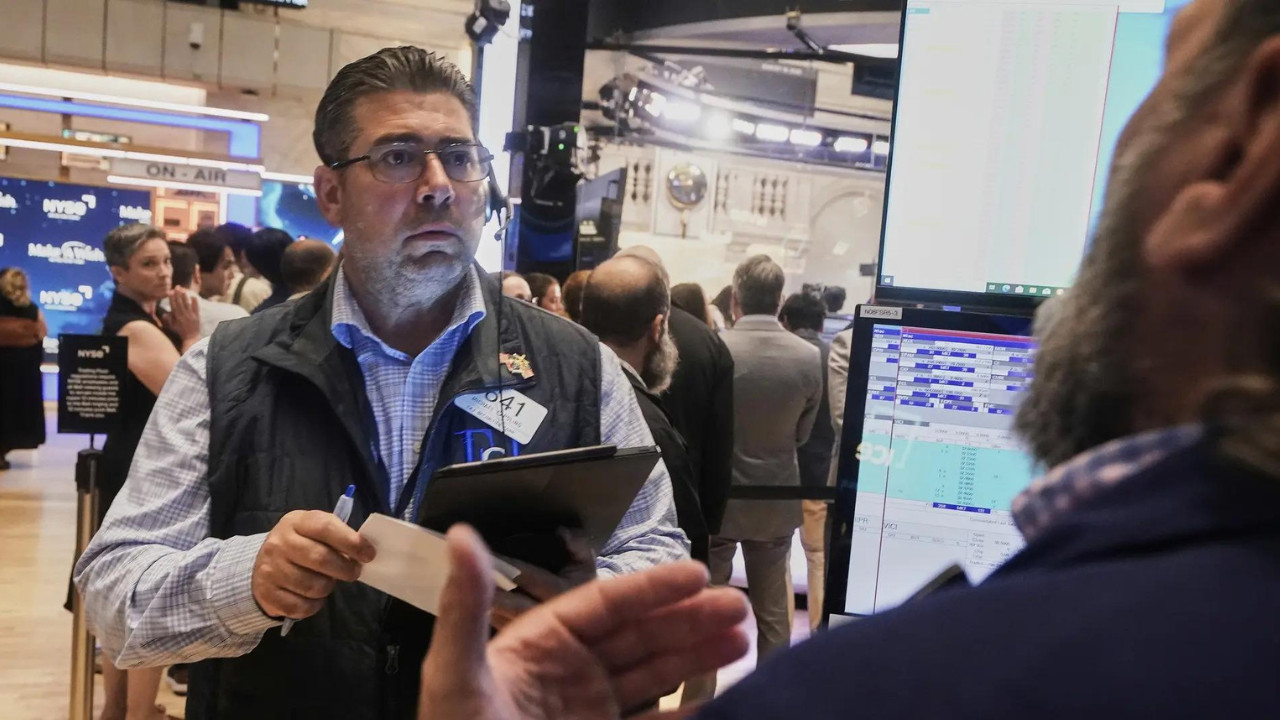US stocks experienced a pullback on Friday following recent record highs, influenced by steady inflation data. The S&P 500 dipped 0.5%, while technology shares, particularly Dell, faced declines. Despite inflation remaining above the Fed’s target, expectations for a potential rate cut in September persist, impacting bond yields and market sentiment.
Navigating Wall Street’s New Landscape: Is a September Rate Cut Still in Play?
Wall Street took a breather today, easing back from recent record highs as the latest inflation data painted a more complex picture than investors might have hoped for. Instead of a clear runway to interest rate cuts, the market’s now facing a bit of turbulence, leaving many wondering if the Federal Reserve’s anticipated September pivot is still on the cards.
The Dow Jones Industrial Average, S&P 500, and Nasdaq Composite all experienced slight dips, a subtle reminder that the market’s ascent isn’t always a straight line. While not a dramatic plunge, the shift reflects a collective pause as traders digest the implications of stubbornly consistent inflation.
Inflation Holds Steady: What Does This Mean for Interest Rates?
For months, the market’s been buzzing with anticipation of the Fed finally loosening its grip on interest rates. The expectation has largely centered around a September move. However, the latest inflation figures – remaining stubbornly around 3.4% – have thrown a wrench in the gears. This persistent inflation suggests that the Fed’s battle isn’t over yet. They are now walking a tightrope between supporting economic growth and ensuring price stability.
Think of it like this: the Fed is trying to steer a ship, and inflation is the wind. If the wind’s too strong (high inflation), they need to keep the sails tight (high interest rates) to avoid veering off course. Loosening the sails (cutting rates) too soon could send the ship careening toward an inflationary storm.
The implications are significant. Higher interest rates tend to cool down the economy, making borrowing more expensive for businesses and consumers alike. This can impact everything from mortgage rates to business investments. The market’s recent performance largely relied on the anticipation of lower borrowing costs in the coming months.
Sectors React: Which Industries Felt the Pinch?
The slight market downturn wasn’t felt equally across all sectors. Industries particularly sensitive to interest rate changes, like real estate and utilities, experienced more pronounced declines. These sectors typically thrive in lower-rate environments, making them vulnerable when the prospect of rate cuts dims. Conversely, sectors perceived as less sensitive to interest rates, such as consumer staples and healthcare, showed greater resilience.

This divergence highlights the nuanced impact of monetary policy. It’s not a one-size-fits-all scenario, and different sectors react differently to the prevailing economic winds. Savvy investors pay close attention to these sector-specific dynamics to make informed decisions.
What Are Traders Watching Now? The Road to September
The next few weeks will be crucial in shaping expectations for the Fed’s September meeting. Several key economic indicators will be closely scrutinized, including upcoming jobs reports, retail sales data, and further inflation readings. Strong economic growth alongside persistent inflation might push the Fed to hold steady, while a weakening economy could increase the pressure to cut rates.
Moreover, the market will be carefully parsing the Fed’s communication. Any subtle shifts in language or tone from Fed officials could provide clues about their thinking. Pay close attention to speeches and press conferences, as these often offer invaluable insights into the central bank’s strategy.
This heightened level of scrutiny will likely translate into increased market volatility. As investors grapple with uncertainty, we can expect to see more fluctuations in stock prices. Navigating this environment requires a steady hand, a long-term perspective, and a healthy dose of caution. Learn more about managing market volatility [here](insert internal link to relevant content about investing during uncertain times).
Ultimately, predicting the future is an impossible game. However, by closely monitoring economic data, understanding sector-specific dynamics, and paying attention to the Fed’s communications, investors can improve their odds of making informed decisions in this complex and ever-evolving landscape. Wall Street’s slight pullback serves as a timely reminder that the path to prosperity is rarely a straight line.







